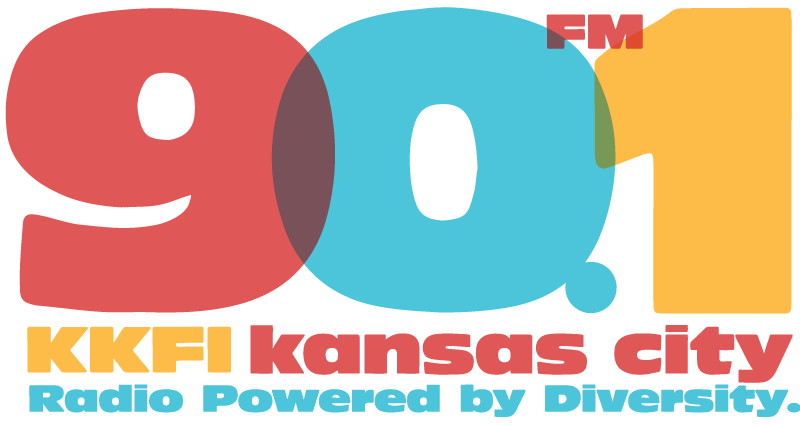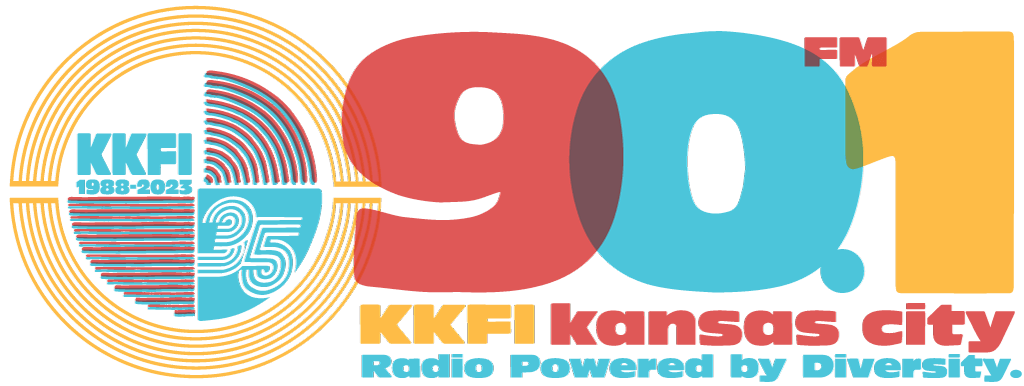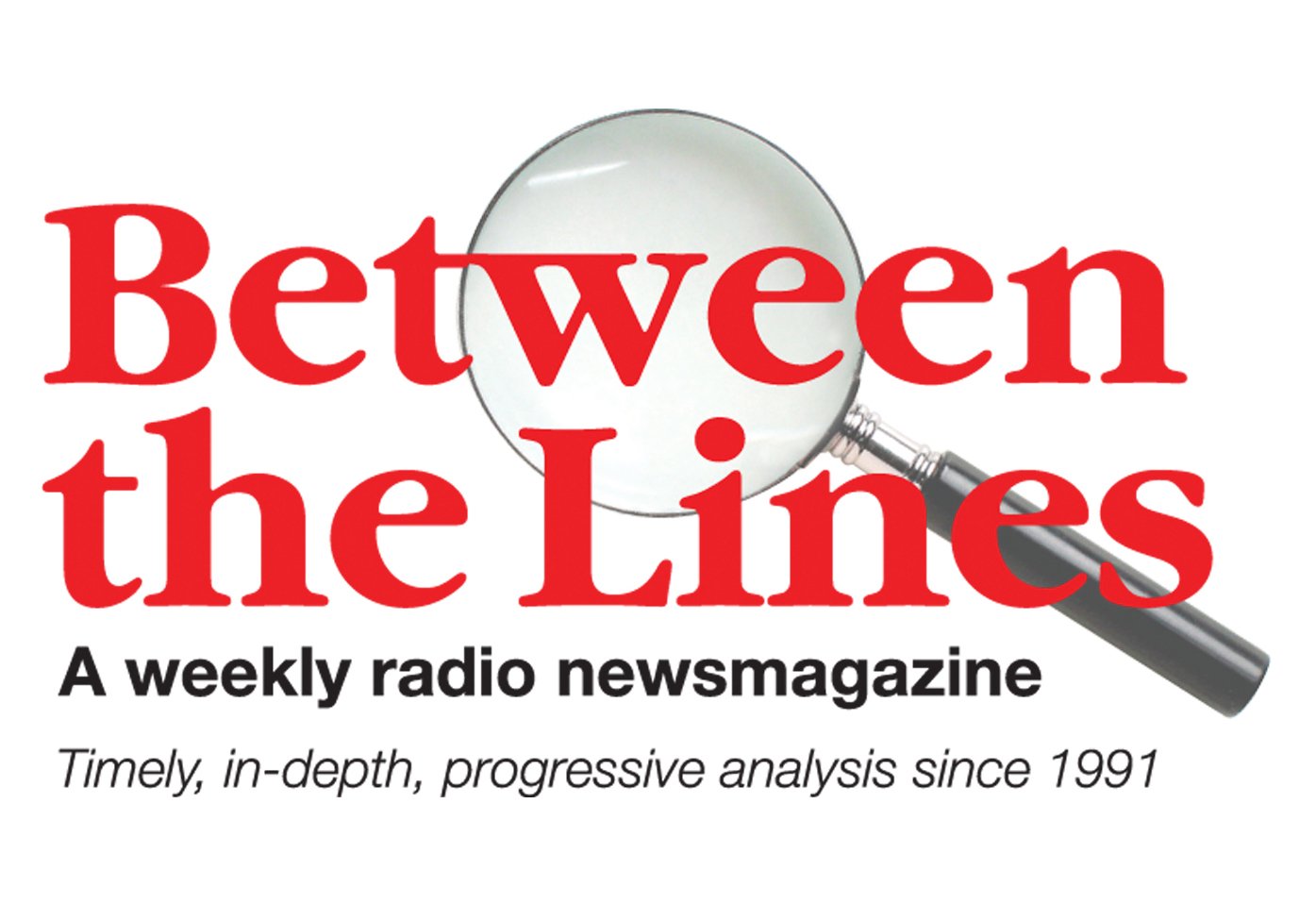Candidates of Both Parties Avoid Debate on Rising Economic Inequality in 2014 Campaign
![]() Interview with Sam Pizzigati, veteran labor journalist and Institute for Policy Studies associate fellow, conducted by Scott Harris
Interview with Sam Pizzigati, veteran labor journalist and Institute for Policy Studies associate fellow, conducted by Scott Harris

The results of the 2014 midterm election were decidedly bad news for Democratic Party candidates from coast to coast. Republicans took control of the U.S. Senate, gaining at least seven seats, expanded their majority in the House of Representatives by 12 seats and won more governor’s mansions and state legislatures. The few bright spots for progressive activists were seen in statewide and local referendums. Voters in Alaska, Arkansas, Illinois, Nebraska and South Dakota all approved ballot questions boosting the minimum wage. Colorado and North Dakota defeated so called “personhood” measures restricting reproductive rights. Colorado and Oregon voters approved ballots mandating the labeling of GMO foods. Alaska, Oregon and Washington, D.C. favored legalizing marijuana. And ballot measures banning natural gas fracking won eight ballots at the city and county level.
Pundits and political operatives pointed to a number of factors present in the 2014 election that explained the dismal showing of Democrats. Primary among them was the lowest voter turnout in more than 70 years, with only 36.4 percent of eligible voters going to the polls. Also on that list was the historic poor showing for the party in power at the White House – and the record-breaking flood of unlimited and unaccountable corporate money spent on election campaigns, a direct result of the Supreme Court’s Citizens United and McCutcheon rulings. Then there were new voter suppression laws enforced in almost two dozen GOP-controlled states, making it more difficult for millions of Democratic leaning voters to cast ballots.
But while the buckets of covert corporate cash and new obstacles confronting voters certainly played a role, Sam Pizzigati, a veteran labor journalist and Institute for Policy Studies associate fellow, says that one reason that the vast majority of voters failed to participate in 2014 was that candidates from both parties largely failed to address one of the most important issues facing American families: growing income inequality. Between The Lines’ Scott Harris spoke with Sam Pizzigati, who explains why he believes both major parties avoid discussion of this critical economic issue.
Sam Pizzigati is an associate fellow with the Institute for Policy Studies and author of the book, “The Rich Don’t Always Win.” Visit Pizzigati’s weekly newsletter “Too Much,” at TooMuchOnline.org.
Related Links:
 Interview with Sam Pizzigati, conducted by Scott Harris, Counterpoint, Nov. 10, 2014 (31:43)
Interview with Sam Pizzigati, conducted by Scott Harris, Counterpoint, Nov. 10, 2014 (31:43)- Institute for Policy Studies at IPS-DC.org
- United for a Fair Economy Faireconomy.org
Climate Change Activist Groups Gear Up to Fight New GOP Senate Majority Push to Build Keystone XL Pipeline
 Interview with Karthik Ganapathy, U.S. communications manager with the climate change group 350.org, conducted by Scott Harris
Interview with Karthik Ganapathy, U.S. communications manager with the climate change group 350.org, conducted by Scott Harris It’s a sad irony that in less than two months after the world’s largest protest confronting climate change in New York City on Sept. 21, the U.S. midterm election conferred all political power in the U.S. Congress to the Republican party. The GOP largely dismisses the science behind the assertion that climate change is a dire threat to the planet. Perhaps the most determined foe of climate change policy in Washington is Oklahoma Sen. James Inhofe, the likely next chair of the Senate Environment and Public Works Committee. Inhofe, a proud climate science denier, has often stated that global warming is a hoax and that a warmer planet may have a beneficial effect on our lives.
It’s a sad irony that in less than two months after the world’s largest protest confronting climate change in New York City on Sept. 21, the U.S. midterm election conferred all political power in the U.S. Congress to the Republican party. The GOP largely dismisses the science behind the assertion that climate change is a dire threat to the planet. Perhaps the most determined foe of climate change policy in Washington is Oklahoma Sen. James Inhofe, the likely next chair of the Senate Environment and Public Works Committee. Inhofe, a proud climate science denier, has often stated that global warming is a hoax and that a warmer planet may have a beneficial effect on our lives.Come January with Republicans in control of both houses of Congress, all that stands between a dramatic roll back of many existing environmental polices and the trash can is President Obama’s veto pen. Top Republican priorities include targeting Environmental Protection Agency rules limiting carbon emissions from coal-fired power plants, dismantling or weakening the federal Clean Water Act, expediting approval of liquefied-natural-gas exports and ending the decades-old ban on crude oil exports.
But perhaps the most important and symbolic environmental policy issue up for debate next year is the decision facing the White House on the future of the proposed Keystone XL pipeline that would carry 900,000 barrels of dirty tar sands oil from Alberta, Canada to the Gulf Coast. President Obama has said that he will only allow the pipeline to be built if it doesn’t significantly worsen carbon pollution. And although a State Department review of the project concluded the project won’t increase carbon emissions, environmental groups assert the study was deeply flawed and that tar sands oil and its extraction produce more greenhouse gases than natural gas and traditional crude oil. Between The Lines’ Scott Harris spoke with Karthik Ganapathy, U.S. communications manager with the climate change group 350.org, who discusses the results of the midterm election and the coming showdown over the Keystone XL pipeline.
For more climate change action and 350.org visit http://350.org.
Related Links:
 Interview with Karthik Ganapathy, conducted by Scott Harris, Counterpoint, Nov. 10, 2014 (27:53)
Interview with Karthik Ganapathy, conducted by Scott Harris, Counterpoint, Nov. 10, 2014 (27:53)- “What the election means for the climate movement,” 350.org, Nov. 5, 2014
- “All the times we’ve been counted out on Keystone XL,” 350.org
- “Congratulations, Voters. You Just Made This Climate Denier the Most Powerful Senator on the Environment, New Republic, Nov. 5, 2014
- “How a Republican Senate Could Force Obama’s Hand on Keystone,” National Journal, Nov. 5, 2014
- “Midterm election results could spell trouble for environmental issues, media report,” Times Picayune, Nov. 5, 2014
Young Activist Explains Her Deep Commitment to Reverse Climate Change
 Interview with Sean Glenn, climate change activist and Great March for Climate Action participant, conducted by Melinda Tuhus
Interview with Sean Glenn, climate change activist and Great March for Climate Action participant, conducted by Melinda Tuhus The first week of November saw daily nonviolent civil disobedience actions at the offices of FERC, the Federal Energy Regulatory Commission, in Washington, D.C. The protest was organized by a group called Beyond Extreme Energy. Activists from the shale fields of Pennsylvania joined dozens of supporters in an effort to block entrances to the building to protest FERC’s approval of almost all the natural gas infrastructure proposals that come before it.
The first week of November saw daily nonviolent civil disobedience actions at the offices of FERC, the Federal Energy Regulatory Commission, in Washington, D.C. The protest was organized by a group called Beyond Extreme Energy. Activists from the shale fields of Pennsylvania joined dozens of supporters in an effort to block entrances to the building to protest FERC’s approval of almost all the natural gas infrastructure proposals that come before it.In evaluating the projects, the commission does not consider the source of the energy, so the fact that the natural gas is produced by the fracking extraction method – with its attendant environmental and health impacts – is not a factor in FERC’s decisions. Nor is the role natural gas plays in exacerbating climate change. Environmental critics charge that far from being a “bridge to a clean energy future,” the construction of gas pipelines, compressor stations and export terminals is locking in the use of fossil fuels for decades to come.
Between The Lines’ Melinda Tuhus, who participated in the week of actions, interviewed Sean Glenn, a young woman who walked across the country with the Great March for Climate Action from March 1 to Nov. 1, when the group and its many supporters walked the last seven miles to the White House for a rally. The stated goal of the Great March for Climate Action was to change the hearts and minds of the American people, elected leaders and people across the world to act now to address the climate crisis. Here, Glenn explains her motivation for getting involved in the march, why she walked the first three months in silence and her decision to be arrested twice in three days by engaging in nonviolent civil disobedience.
SEAN GLENN: First of all, it was really, really easy. I actually really enjoyed it and found a whole level of comfort in it that I’ve never really felt before. I decided to do it for many reasons: to stand in solidarity with the unheard victims of climate change, which I was feeling like one of those; the plants, animals, people living in islands all over the place – I mean everyone, really, at this point, because climate change is a global issue and no one’s really listening to that. And I wasn’t ready to fight my way across the country, screaming about climate change and all the terrible things that are happening, because I was in school and I was just terribly depressed with the state of the world and the fact that no one was listening or ready to do anything about it. So those were the main two reasons for me. And also, we talk about stuff like this so much, and what are these words actually doing? To a certain extent, it’s time to make a change rather than just keep talking about it over and over again. Yeah, it was a time of finding more peace within myself and a really great healing moment for myself and it was time to step back from my own story and let other people kind of build my story a little bit. They just really helped me to build this really happy, loving, peaceful, ready-to-go person, and I’m entirely humbled and grateful for the community for supporting me in my decision to do that, and so happy that they decided to help me carry it throughout the country when I decided it was time to speak.
BETWEEN THE LINES: I think that’s really great. I’ve never tried that, but I can see that it could be really powerful. So, skipping ahead eight months, the march finished, well, marched in from Bethesda to the White House, which was a mere seven miles, because I know you did some days that were three times that long, and a lot of people joined you, including myself. That was my one and only day on the march. What was it like for you to finish the march in D.C.?
SEAN GLENN: It was an awesome day, our last day into D.C. This is our last day marching together, and this has been our life for eight months. But it was beautiful and I was just so ready to be there with everybody, and I know everyone was just tired, too. I think it was time for the march to end, and it was time for everybody to move on to the next step. It’s been a huge growing experience and learning experience as far as what we think will really work in this movement and what we really feel we need to do as individuals in this movement. So, yeah, coming into D.C. it was really beautiful; there were people everywhere. I’m just so grateful I was given this opportunity and so happy I took it.
BETWEEN THE LINES: Well, speaking of BXE, Beyond Extreme Energy, and your participation all week here. It’s been a very intense week. The last day of the march was Saturday and then you had a celebration that night, and then there was an all-day training on Sunday, and then people have been at FERC – Federal Energy Regulatory Commission – early every single morning this week, and it was sort of the culmination today, which was an amazing day, which you had a big part it, and you and Mack and Margaret got arrested again this morning. And that was pretty exciting because this was the last day of the activities and the group, Beyond Extreme Energy, was trying to shut down FERC because of its approvals of almost every natural gas project – fracked gas project – that comes before it. And so five of you locked down inside lock boxes, which are PVC pipes that you stick your arms into from both ends, and have to be cut out, basically – and took over the garage, just blockaded that. And that basically shut things down, like people couldn’t get in – it was like if it was closed there, all the employees sort of bubbled up all around the front door and all across the street and they were all mixed in with the protesters and gave everyone a chance to have conversations, some of which were not confrontational (some were). Why did you decide to get arrested twice in three days?
SEAN GLENN: (Laughs) Well, it just seems like this is where we’re at in this movement right now. We really need people willing to put themselves on the line, willing to serve time or pay money or do whatever we got to do to stop these projects, whether it’s in an office signing on a “yes” to construction zone or going to the construction and actually halting the whole progress and the whole destruction of the land there and the communities and everything. In marching across the country, that’s the one thing I learned I was very ready to do. I’ve done marches before. I’ve participated in rallies my whole life; and I’ve been knocking on doors and filling out petitions and all that. And, it’s all good work; it’s definitely good work. But I was just so ready to see something stop right in front of me for my own being there. It really is something I can’t wait to do more of (laughs). And it’s just an opportunity to use this physical body we’re given to do some really good work and actually slow things down.
For more information on the FERC protests and related issues, visit Climatemarch.org.
Related Links:
- “What the election means for the climate movement,” 350.org, 11/5/14
- Popular Resistance popularresistance.org
- The Great March for Climate Change climatemarch.org
- The Great March for Climate Change Facebook page at Facebook.com/ClimateMarch
- Follow The Great March for Climate Change on Twitter at @ClimateMarch or Twitter.com/ClimateMarch
- “Great March for Climate Action reaches Iowa City,” thegazette.com, Aug. 20, 2014
- “Ed Fallon on the Great March for Climate Action,” The Des Moines Register, May 2013
- “Will A 3,000-Mile ‘Great March For Climate Action’ Change Minds On Climate Change? Weather.com, Dec. 23, 2013
- “Why we’re getting ready to march for climate change by Bill McKibben, Eddie Bautista and LaTonya Crisp-Sauray,” Grist, Sept. 25, 2014
This week’s summary of under-reported news
Compiled by Bob Nixon
- As the Nov. 24 deadline approaches for a nuclear deal between the West and Iran, Russia has emerged as a key player. Moscow is working on a plan with Tehran’s leaders to convert uranium into fuel for Iran’s civilian nuclear reactor. Western powers negotiating with Iran dubbed the “P-5 + One,” includes the U.S., Britain, France, Germany, China and Russia. (“Role of Russia gives Iran talks a possible boost,” New York Times, Nov. 3, 2014; “Iran hardliners want nuclear deal but no ties with Washington,” Reuters, Nov. 5, 2014; “IAEA report to highlight slow headway in Iran nuclear investigation,” Reuters, Nov. 5, 2014)
- A new peer-reviewed health study has identified and measured toxic air pollution near oil and gas drilling wells in states heavily affected by the controversial hydraulic fracturing, or fracking extraction method, which has boosted U.S. oil and gas production. The study examined air pollution levels in Colorado, Arkansas, Ohio, Wyoming and Pennsylvania. (“Five-state study finds high levels of airborne chemical near oil and gas sites,” Center for Public Integrity, Oct. 30, 2014)
- Weeks after a mass school shooting in suburban Seattle, voters in Washington state overwhelmingly approved a ballot initiative to extend background checks to all gun transfers, including sales at gun shows. At the same time voters rejected a measure supported by pro-gun groups that would have limited background checks. (“I-594 supporters will make push in Olympia for stronger gun laws,” Seattle Times, Nov. 5, 2014; “Washington voters just passed the gun law Congress couldn’t,” Mother Jones, Nov. 5, 2014)



